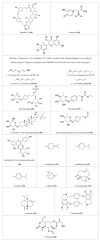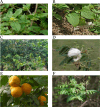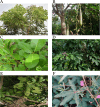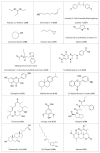Nigerian medicinal plants with potential anticancer activity-a review
- PMID: 39764419
- PMCID: PMC11702266
- DOI: 10.37349/etat.2024.00282
Nigerian medicinal plants with potential anticancer activity-a review
Abstract
Despite the fact that life expectancies are increasing and the burden of infectious diseases is decreasing, global cancer incidence rates are on the rise. Cancer outcome metrics are dismal for low- and middle-income countries (LMICs), including sub-Saharan Africa, where adequate resources and infrastructure for cancer care and control are lacking. Nigeria, the most populous country in Africa, exemplifies the miserable situation. However, the investigation of medicinal plants for better and safer anti-cancer drugs has now increased tremendously. While scientific evidence is emerging of the potential of some constituents of medicinal plants used in traditional medicine in Nigeria to have anti-cancer effects, there is now a critical need for platforms that integrate ethnomedicinal information on such plants with emerging scientific data on them, to support and accelerate the discovery and development of more efficacious and safer anti-cancer drugs and recipes. Thus, this review highlights the scientific evidence to date for the anti-cancer potential of plants commonly used in traditional medicine to treat cancers in Nigeria. Scientific databases such as PubMed, Science Direct, Scopus, Google Scholar, and Web of Science, as well as related sources, were searched to retrieve relevant information on anti-cancer medicinal plants. Ethnobotanical/ethnomedicinal details of the identified plants were then linked with the available scientific data on their anti-cancer potential, including the cytotoxicity to cancer and normal cells of the extracts and constituent compounds responsible for the activity. This annotated chronicle of Nigerian medicinal plants with potential anticancer activity is a great resource for all stakeholders in the prevention and management of cancers.
Keywords: Cancer; Nigeria; chemotherapy; cytotoxicity; ethnomedicine; medicinal plants.
© The Author(s) 2024.
Conflict of interest statement
The authors declare that they have no conflicts of interest.
Figures











References
-
- Abdullahi AD, Mustapha RK, Yau S, Adam MS. Exploring the Nigerian Medicinal Plants with Anticancer Activities: A Pharmacological Review. Modern Chemistry. 2018;6:35–8. doi: 10.11648/j.mc.20180602.14. - DOI
Publication types
LinkOut - more resources
Full Text Sources
